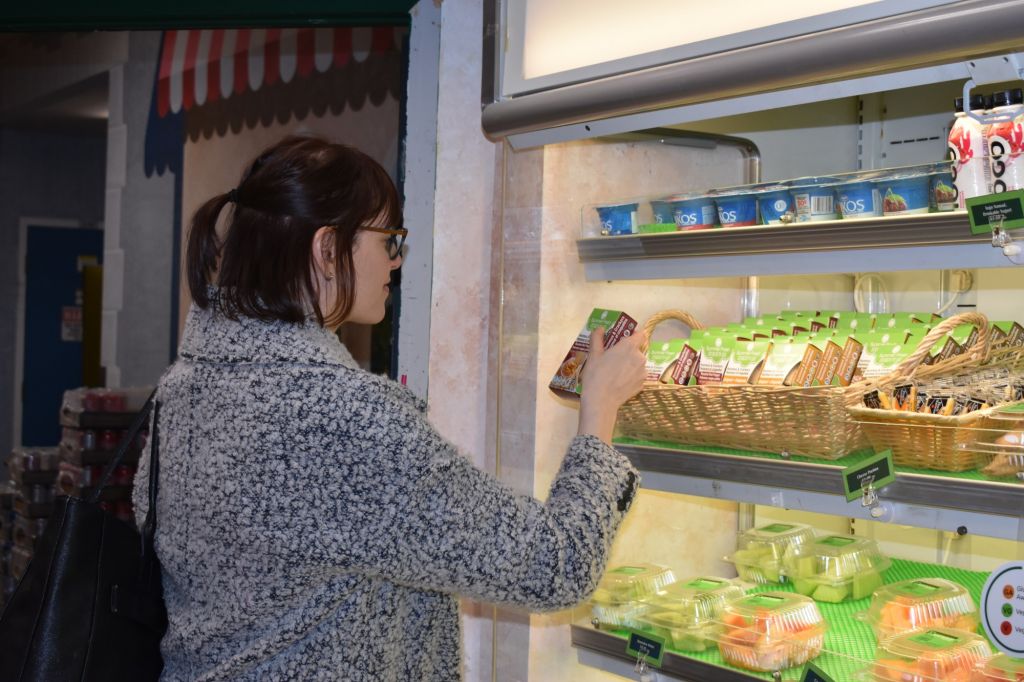It’s noon on a Tuesday and Marketplace Food Court is buzzing with students buying their lunches. The cafeteria has all four checkouts open as people are filed one after the other in line, and the cashiers are working feverishly to serve all the customers waiting to make their purchase during their lunch hour.
Recent surveys have suggested that Canadians have adopted new food habits. Over half of the survey participants admit to eating out several times a month. Among them are millennials, the generation said to be the most likely to spend their money on things like coffee or takeout meals.
There certainly is a demand for fast food and drinks here at Algonquin with seven different food services to buy from.
In the 2016-2017 school year, there were about 1.6 million food transactions recorded with over half a million dollars given back to college operations according to food and conference services general manager Mary Baxter. Broken down monthly, it’s estimated that approximately $170,000 worth of transactions are made monthly during the fall and winter terms.
What are students buying daily?
According to Baxter, coffee is the most sold beverage in the Algonquin cafeterias and pizza is the most popular meal, followed by the breakfast special and salad bar.
“I live really far and it’s kind of a hassle to bring my own lunch over, I don’t really have the space to carry one in my bag,” said pre-animation student Nicholas Brodeur. “I normally just grab whatever is closest and what I think is cheapest, it usually winds up being the pizza or the stirfry.”
Sometimes buying meals seems like the most logical solution to students. “I didn’t do groceries for the past few weeks so I’ve been buying my lunches,” said first-year police foundations student Hunter Colburn. “It’s just easier to come to the cafe and grab something to eat real quick.”
Though grocery shopping and meal prepping take a lot of time and effort, the financial benefits may be worth a second look. A make-your-own pasta in the cafeteria is $7.25 which gets you 75 to 100 grams of pasta in the dish.
On the flip side, to make your own pasta, you would pay about $1.50 for 900 grams of pasta and approximately $5 for a gourmet sauce. That means it costs the same for one cafeteria-bought pasta as it is to make about nine of the same portions worth of homemade pasta.
Food expert and author Korey Kealey knows about the complications of meal prepping. Many of her recent clients have been concerned parents of university kids who have been struggling to balance independent life and feeding their bodies with the nutrients it needs. Time and efficiency is a problem but Kealey says it should be one of the things to prioritize in life.
Perhaps that hour on Netflix or Instagram is better well spent in the kitchen.
“You do have enough time, you just need to plan,” said Kealey. “It’s about making it a priority in your life. Food is the foundation of everything you do so when you decide that food and everything you put in your body is important, then you will find the time to take care of yourself.”
Vegetables are one of the hardest things to incorporate into meals and everyday diet, she said.
“Everyone can eat bread and pasta and store-bought sauces; I think you need to learn how to augment your meals with vegetables and fruits and things that your body really needs.”
So the trick is to buy in bulk for yourself or with a group of friends to save money. Peel and chop them right away so they are ready to grab whenever you need a snack or to throw in a salad, stir-fry or stew. If your vegetables are no longer looking good enough to eat fresh, Kealey suggested boiling them up in a broth and puréeing them to make a soup.
But when it comes to trying to eliminate food waste, the freezer is your best friend because you can freeze so many things before it goes bad. It is also a great way to have a diversity in meals. Cooked meals can be accumulated in the freezer over time and rotated through so that homemade food doesn’t get boring.
As long as there are a few key staples in the house, there is a simple formula to make a wide variety of delicious meals.
Kealey explained that it’s about combining the basics and matching them with the flavours you like. Start with a base like pasta, brown rice, potato, quinoa etc. then add any kind of vegetable like spinach, shredded carrot or a medley. Lastly, add a sauce such as a fresh pesto, tangy marinara or even creamy alfredo.
To get fancy with the dish, add a topping such as green onion to give it that extra punch of flavour. As a bonus tip, buy a bowl that you really like and eat out of it to make your meal that much more enjoyable.
Kealey also suggested looking for tested, easy to use recipes. Going onto websites like Foodland Ontario and Dairy Farmers of Canada can provide you with simple and effective recipes that can turn anyone into a cook.
If you know how to make 10 recipes, you are set for at least a two-week rotation of different meals that are healthier and a nice change from the same old Kraft Dinner and pizza.


